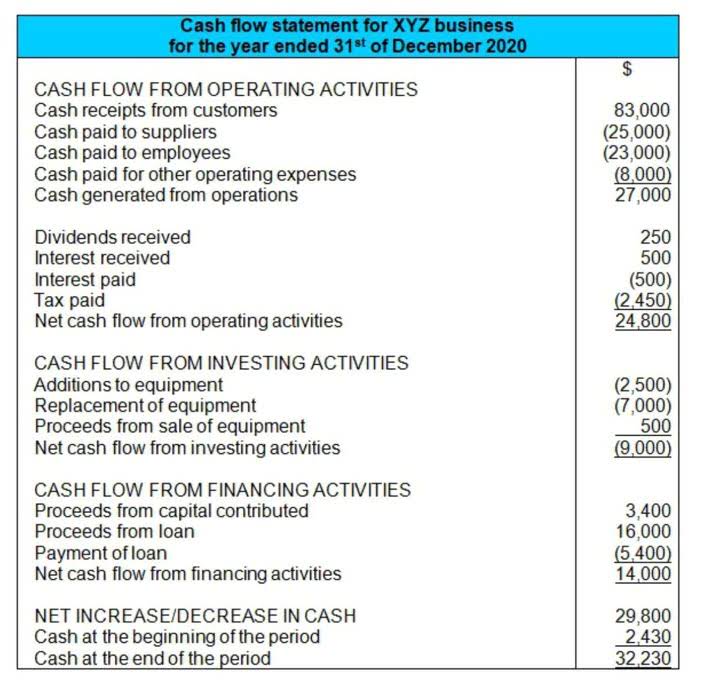
Subsequent transactions for the accounting period can now be entered in the usual manner. If you are just starting your business, your balance sheet should be included as a part of your business plan. In accounting, it’s vital to understand various terminologies to manage opening and closing balances effectively. Terms such as B/D (brought down) and C/D (carried down) are particularly important, as they represent the opening and closing balances, respectively.
‘Worst case of badge abuse in Harris County history”: Powerful closings delivered in ex-cop’s sentencing phase

Opening Balance is more than a number; it’s a cornerstone of https://www.bookstime.com/ accurate financial management. By comprehending its essence and incorporating it into accounting practices, businesses ensure precision, transparency, and informed decision-making. The Opening Balance sets the stage for a new financial chapter, enabling businesses to navigate the intricate landscape of transactions, credits, and debits with confidence and clarity. Through its strategic use, businesses can harness a powerful tool that drives financial accuracy and ultimately paves the way for sustained growth and prosperity. A newly started business will not have any closing balances for the previous accounting year that has to be carried forward. Instead, the investments and capital of the business will be entered as opening balance for the current accounting year.
Opening Entry In Accounting
Our expertise includes dealing with the more complex aspects such as dealing with ad hoc payments or recurring payments. As the business moves forward the amount spent by the business and the amount owned by the business are added to that balance to create a closing balance at the end of the first designated accounting period. Usually the person starting a business will have funds that they can pay into that business on day one, in which case these funds will represent the opening balance. An opening balance refers to the amount of money a business has at the beginning of a specific accounting period.

Staff Spotlight: Chris Long, Accounts Junior
Accounting adjustments are essential for ensuring the accuracy of the opening balance and, ultimately, the company’s financial statements. These adjustments, typically made at the end of an accounting period, include revising revenue and expense accounts, as well as balance sheet accounts. Integrating these adjustments allows businesses to convert cash transactions into the accrual accounting method, ensuring accurate recording of expenses and revenue. This practice lays a robust foundation for evaluating performance, maintaining compliance, and preparing reports. https://x.com/BooksTimeInc As a business evolves, it may need to create new accounts to reflect changes in its operations or to improve financial reporting. When these new accounts are established, it is necessary to adjust the Opening Balance Equity to allocate the correct starting balances.
What is an Opening Balance Sheet?
This balance (whether it’s positive or negative) is brought forward to become your business’ opening balance. The audit process includes testing the transactions that reduce the Opening Balance Equity account. Auditors trace these transactions to ensure they are accurately reflected in the company’s financial statements and that they comply with the disclosure requirements of the applicable accounting standards. This scrutiny helps to maintain the credibility of the financial statements, providing assurance to stakeholders that the company’s financial position is presented fairly. The journal records the assets, liabilities and equity of the business in the general ledger as opening balances.
- This is one of the main aspects of managing your cash flow and keeping track of a company’s financial health.
- Knowing what the opening and closing balances of your business are will help to establish exactly how well things are going.
- The debit or credit balance of a ledger account brought forward from the old accounting period to the new accounting period is called opening balance.
- If you’re unsure about any aspect of your taxes or need assistance with financial tax planning, consulting tax advisors at Sleek will save you time, money, and potential headaches.
- It represents the residual equity from previous periods that is carried forward into a company’s current balance sheet.
- Once you’ve been running a business for more than one accounting period, you’ll need to start calculating your company’s opening balance.
Understanding Opening Balance Equity: A Guide for Financial Professionals
The owner of the business has injected capital amounting to 6,000 when the business started and the retained earning to date are calculated as follows. In our commitment to covering our communities with innovation and excellence, we incorporate Artificial Intelligence (AI) technologies to enhance our news gathering, reporting, and presentation processes. On Thursday, the sentencing phase was unexpectedly interrupted when Goines experienced a medical emergency during the prosecution’s closing arguments. Whether you want to grow internationally or focus on a specific market, everything is possible.
What is S455 Tax?

The opening balance is used in the beginning of a financial plan on the opening balance sheet. The length of time that a company has been operating determines what should appear on the opening balance sheet. Opening balances are important if you transfer your accounts from one accounting system to another. In this case, the last entry in the old accounts is the opening balance in the new accounts.

Opening Balance Journal Entry
- Balance B/D means “brought down”, and refers to the amount that has been carried forward from a previous accounting period, which is also known as the opening balance.
- Your opening balance is how much money your business has at the start of a specified accounting period.
- GAAP requires that companies eventually reallocate the balance in the Opening Balance Equity account to the appropriate permanent equity accounts, such as retained earnings or additional paid-in capital.
- In the ledger, balance b/d means opening (or) the beginning balance of an account.
Assets include any cash your business has on hand, as well as anything that your business has purchased and could sell in the future. It can be helpful to look up an example sheet like this one available from RBC Royal Bank. Our opening balance for the new period is the €2,000 brought forward from our closing balance. Double Entry Bookkeeping is here to provide you with free online information to help you what is opening balance learn and understand bookkeeping and introductory accounting. The opening entry journal is one of many bookkeeping entries used in accounting, discover another at the links below.
What is Opening Balance Equity and How to Fix It?
An opening balance is the amount of money a business has available at the start of a specific accounting period. This period could be a day, a week, a month, a quarter or a year, depending on how the business manages its finances. The balance can be a positive or negative figure, and can be a useful way of tracking a company’s performance across different periods. Financial professionals often scrutinize the Opening Balance Equity account to ensure that the balances are being correctly resolved. This scrutiny is part of the process of establishing a solid foundation for the company’s financial records.






